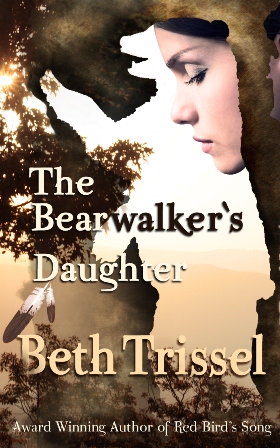Called Chapel Hill (old homes invariably have names) this Georgian style
brick house has been in the family for eight generations.
Sadly, the
old kitchen, a separate building from the main house, no longer stands but I remember it
from my childhood. Some outbuildings still remain,
among them the smokehouse and stable. The house itself is filled with a
wonderful collection of heirlooms. The miniature china dogs I played
with as a child turn up in my Revolutionary War adventure romance novel Enemy of the King.
My ghostly, light paranormal romance novella, Somewhere the Bells Ring, is set at Chapel Hill at Christmas, the season I remember best there. Although I also visited at many other times of the year.
 As
a child, I’d anxiously wander up and down those stairs in the moonlight
in my white nightgown, no doubt looking like a ghost girl, because I
wanted to be with my parents asleep downstairs, but hated to admit it
during the day when my cousins were about. So, I’d be tucked in with
them upstairs, far from asleep, and worries of the night would settle
in. Then I’d wandered the steps until I finally made a bolt for mom and
dad, feeling quite foolish in the bright sunshine of morning with birds
singing. However, nighttime in that house was quite another matter.
As
a child, I’d anxiously wander up and down those stairs in the moonlight
in my white nightgown, no doubt looking like a ghost girl, because I
wanted to be with my parents asleep downstairs, but hated to admit it
during the day when my cousins were about. So, I’d be tucked in with
them upstairs, far from asleep, and worries of the night would settle
in. Then I’d wandered the steps until I finally made a bolt for mom and
dad, feeling quite foolish in the bright sunshine of morning with birds
singing. However, nighttime in that house was quite another matter.
*Image of stairs in far hall
The ‘snake thing’ in Chapter One of Enemy of the King
is drawn from an incident that happened to me at Chapel Hill when I was
a girl during my night wanderings. Back in my contest circuit days,
more than one judge told me a snake couldn’t possibly get into a house
and wind around the antlers of a buck mounted up on the wall. They can
and one did; a rather horrifying discovery for a child to make in the
wee hours.
And then there’s the fact that I always suspected the house
was haunted…not sure by whom. But I’m not entirely certain I was alone
on those stairs, though whoever kept me company was benign.
To clarify, I do not live at Chapel Hill. My aunt does, but it’s not
far from where my husband and I live on the family farm in nearby
Rockingham County.
I also love homes of the Victorian era. Our farm-house dates back into the 1800’s. Old homes from the
nineteenth or eighteenth centuries (and beyond) have character, charm,
mystery, and sometimes, ghosts.
Beneath the staircase at Chapel Hill is
a deep closet, long rumored to be the site of a secret passage now
closed from view. Whether any truth exists to this family legend I do
not know and apart from tearing out the back of the recessed closet
can’t think how else to make this determination. But I assure you,
there’s a secret passage in the story I set there.
The Joshua Wilton house in Harrisonburg VA is a beautifully restored Victorian home
operating as an Inn and Restaurant. They also serve tea in the
afternoons if visitors wish to come only for that lovely occasion.
For more on the Joshua Wilton house visit: http://joshuawilton.com/
Shirley Plantation and Berkeley Plantation homes pictured in that order.
Chapel Hill is pictured first in color and then black and white.






